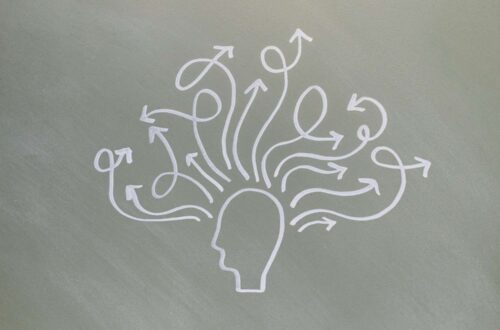The Stress Paradox: Enemy or Hidden Ally?
Most of us see stress as the villain in our story, something that drains our energy and focus. But science and experience reveal a more complex truth.
When you understand how stress operates and how your emotional algorithm interprets it, stress can become a powerful ally. It sharpens attention, fuels motivation, and helps you grow stronger emotionally and mentally.
At The Emotional Algorithm, we often describe emotions as feedback loops that evolve through experience. Stress is one of the most powerful signals within this loop.
So instead of fighting stress, what if you learned to work with it?
What Exactly Is Stress?
Stress is your body’s built-in alarm system that helps you respond to challenges or changes in your environment. It can be both useful and harmful depending on its intensity and duration.
There are two main types:
1. Acute Stress
This is short-term stress, like preparing for a presentation or meeting a tight deadline. It can sharpen alertness and improve focus.
2. Chronic Stress
This occurs when pressure is constant, such as ongoing workload, unresolved conflict, or emotional strain. It slowly drains your energy and damages well-being.
Between these two lies eustress, or positive stress. Psychologist Hans Selye coined this term to describe stress that motivates and energizes rather than exhausts.
Understanding Eustress: The Productive Kind of Pressure
Eustress is the sweet spot where stress fuels performance instead of depleting it. It’s that spark you feel before a big opportunity or challenge.
The difference between eustress and distress lies in perception.
If you believe the challenge is within your reach, your brain treats stress as a resource. But if it feels overwhelming, the same stress becomes anxiety.
Example:
A writer with a tight deadline might use the pressure as motivation and channel adrenaline into creativity. Another person facing the same situation might freeze if they interpret the stress as a threat.
This difference depends on your emotional algorithm i.e. the internal system that determines how you respond to stress.
The Emotional Algorithm: How Your Mind Processes Stress
Your emotional algorithm is the mental code that runs behind your emotional responses. It’s a pattern shaped by your thoughts, experiences, and coping habits.
Here’s a simplified way to visualize it:
if (stressor ≤ perceived capacity) → activate focus & motivation
else → trigger overwhelm & avoidance
This internal algorithm evolves through experience. The more often you face manageable stress followed by success, the more resilient and productive your system becomes.
To learn how emotional patterns develop, visit How to Identify Emotional Triggers on The Emotional Algorithm.
Why Stress Can Actually Boost Productivity
When stress is properly managed, it can enhance productivity in several ways.
1. Heightened Focus
Adrenaline and norepinephrine released during stress sharpen attention and block distractions, helping you concentrate deeply on important tasks.
2. Increased Motivation
Deadlines and challenges create a sense of urgency that drives action and breaks through procrastination.
3. Improved Efficiency Under Constraints
Moderate stress forces prioritization. When time or energy is limited, your brain naturally filters out nonessential tasks.
4. Enhanced Creativity
Mild stress triggers divergent thinking. Many artists and entrepreneurs find their most innovative ideas under pressure.
5. Emotional Resilience
Each time you overcome a challenge, your emotional algorithm adapts and strengthens, building greater confidence for future stressors.
Example:
A project manager juggling multiple clients faces daily pressure. Instead of collapsing under it, she learns to delegate, automate, and prioritize effectively. Over time, her productivity improves because she’s learned to channel stress, not resist it.
When Stress Backfires: The Downside of Overload
Too much stress flips from energizing to exhausting. When your emotional system stays in overdrive, it can lead to burnout.
Signs of excessive stress include:
- Fatigue and headaches
- Irritability and emotional exhaustion
- Trouble focusing or remembering details
- Loss of creativity
- Disrupted sleep
At this stage, your emotional algorithm is stuck in “error mode.” To restore balance, you must recalibrate your system and rebuild emotional safety.
You can explore more about this recovery process in Rebuilding After Betrayal: Can You Ever Trust Again? on The Emotional Algorithm.
How to Harness Stress for Peak Productivity
Here are proven, practical strategies for turning stress into a source of strength.
1. Reframe Your Relationship with Stress
Stanford psychologist Kelly McGonigal’s TED Talk, “How to Make Stress Your Friend,” shows that simply believing stress is helpful changes your body’s response to it.
When you see stress as energy rather than danger, your emotional algorithm adapts and uses that energy for focus and motivation.
Try replacing “I’m stressed” with “I’m activated” or “I’m ready to take this on.”
2. Train Your Emotional Algorithm with Micro-Challenges
Like a muscle, stress tolerance strengthens through gradual exposure. Start by breaking large goals into smaller challenges.
You can try:
- Pomodoro Technique: 50 minutes of work, 10 minutes of rest.
- Micro-deadlines: Commit to one small deliverable at a time.
- Intentional discomfort: Tackle slightly uncomfortable tasks daily to build resilience.
Each small success reinforces the belief that you can handle pressure.
3. Balance Pressure with Recovery
Stress only boosts productivity when paired with recovery. Without rest, you’ll burn out instead of performing better.
Include these recovery cycles in your routine:
- Short breaks: Take 5–10-minute “booster breaks” every hour (Wikipedia: Booster Breaks).
- Quality sleep: The body processes emotional data during rest.
- Movement: Even light exercise releases endorphins that balance stress hormones.
- Mindfulness: Deep breathing or meditation helps calm your nervous system.
Recovery allows your emotional algorithm to store progress and reset between challenges.
4. Create Rituals and Environmental Anchors
Your environment can signal your brain when it’s time to focus or relax. Establish small rituals that cue your emotional state.
Examples:
- Listen to a specific playlist when starting work.
- Adjust lighting or scents to mark transitions between focus and rest.
- Journal briefly at the end of each day to track how you handled stress.
Example:
A designer begins each work session by putting her phone away and setting a 30-minute timer. Over time, this ritual trains her brain to enter a focused state automatically, reducing decision fatigue.
5. Monitor Your Stress–Productivity Curve
The Yerkes–Dodson Law shows that productivity increases with stress up to a point, but performance drops when pressure becomes excessive.
(Image Source: Wikipedia)
Ask yourself:
- When do I feel most energized without feeling frantic?
- How long can I sustain deep focus before fatigue sets in?
- Which tasks leave me feeling satisfied rather than drained?
These reflections help fine-tune your emotional algorithm and maintain your optimal performance zone.
6. Use Emotional Feedback Loops
Observe your emotions as signals, not commands.
When stress spikes, pause and ask:
- What emotion is showing up right now?
- What message might it carry?
- How can I respond thoughtfully instead of reacting automatically?
This awareness prevents emotional hijacking and keeps your responses balanced.
To learn more, read How to Identify Emotional Triggers to know how to decode emotions before they control your actions.
7. Connect Stress to Meaning
Purpose transforms pressure into drive. When stress serves a meaningful goal, it becomes energizing instead of draining.
Example:
Nurses, teachers, and first responders handle enormous stress daily. Yet their sense of purpose turns that stress into fuel, helping them stay resilient and committed.
Ask yourself, “Why does this task matter to me?” That question anchors stress to purpose and turns effort into fulfillment.
Real-World Example: Stress in Action
Imagine you’re launching a passion project — perhaps a blog like The Emotional Algorithm.
At first, the workload feels overwhelming: deadlines, design choices, and outreach plans. But when you engage your emotional algorithm, the experience shifts.
- You reframe stress as a sign that you care.
- You break the project into small, achievable tasks.
- You schedule time to rest and recharge.
- You reflect on progress daily.
Over time, the pressure that once felt draining becomes a driving force. You find consistency, creativity, and confidence growing in balance.
Trusted External Resources
- How Algorithms Discern Our Mood from What We Write Online – A fascinating look at how digital systems analyze emotional tone.
- The Feel of Algorithms – Insights into how emotions and digital logic intersect.
- Multimodal Emotion-Recognition Algorithm Study – Research on how machines interpret emotional patterns.
- Booster Breaks – Wikipedia – Evidence-based methods for sustaining productivity through rest.
These resources remind us that emotions, like data, follow patterns that can be decoded and improved.
Common Pitfalls and How to Avoid Them
| Pitfall | Why It Happens | Fix |
|---|---|---|
| Overworking under stress | You confuse intensity with productivity | Schedule recovery periods |
| Negative self-talk | You label stress as failure | Reframe stress as growth input |
| Ignoring emotional feedback | You suppress fatigue signals | Check in with yourself daily |
| Lack of purpose | Work feels meaningless | Connect stress to meaningful goals |
| Isolation | You handle everything alone | Seek support and accountability |
Conclusion: Stress Is Not the Enemy — Mismanagement Is
Stress is an inevitable part of life, but it doesn’t have to be destructive. The secret lies in understanding your emotional algorithm and learning how to work with it.
When pressure builds, remember these four steps:
- Reframe stress as energy.
- Break goals into manageable challenges.
- Balance effort with recovery.
- Reflect on emotional feedback.
By mastering this process, stress becomes your partner in growth rather than your obstacle.
For more tools and insights, visit
👉 The Emotional Algorithm
and explore How to Identify Emotional Triggers to continue refining your inner code.






